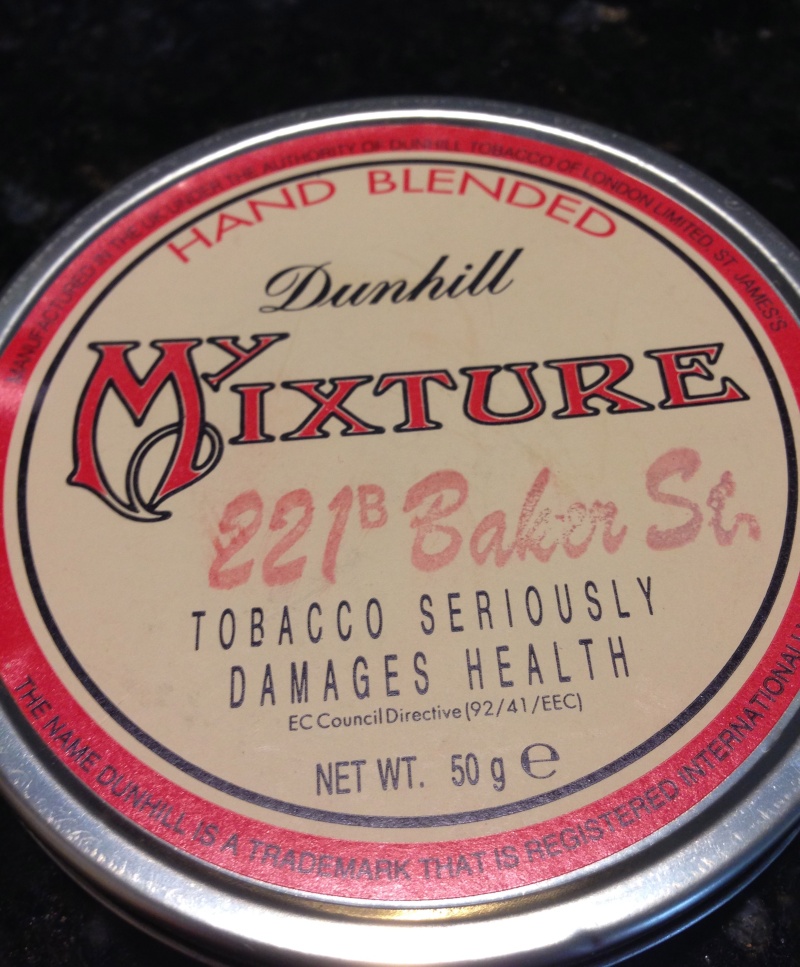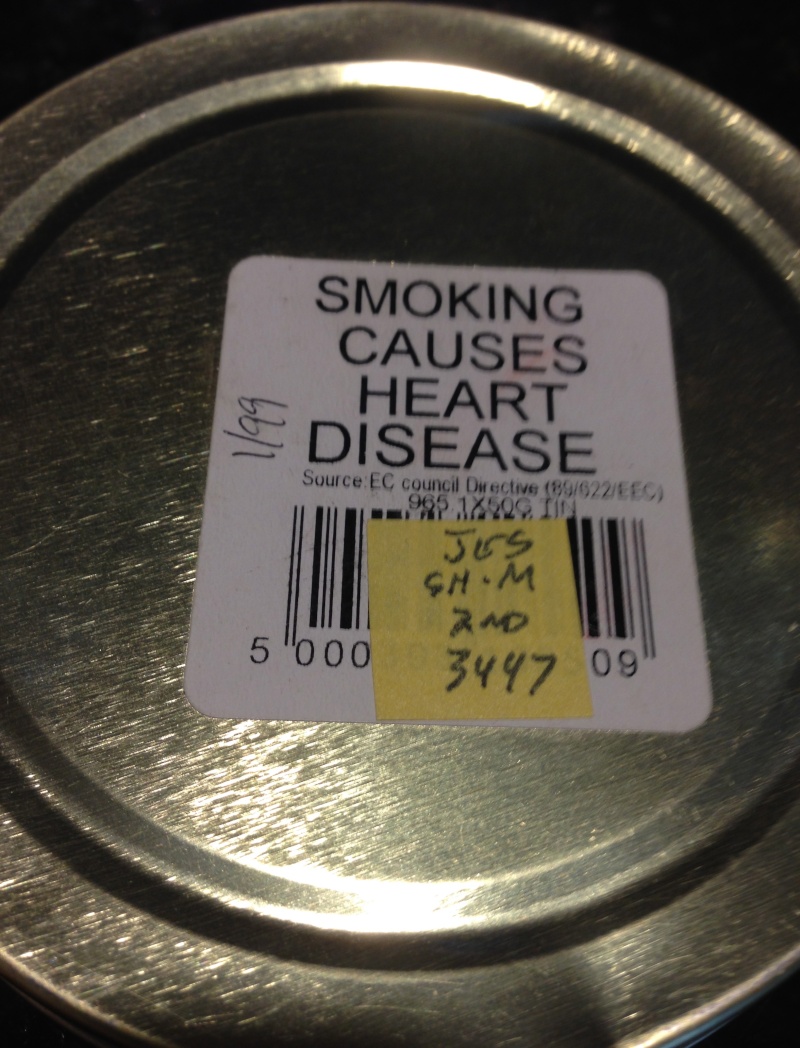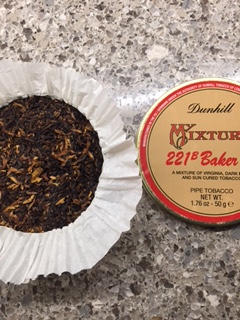That's interesting. Unless one was going to London often back then, you would not have had the opportunity to have purchased that blend. The London store blends were pretty much only sold there. I remember going to the New York store backin the mid 90's and they said they could mix ANY of the blends in "the book" of My Mixtures they had but you had to purchase a min. of 8 oz as I recall. Sadly you can't do that anymore as they don't sell tobacco products OR pipes at any of the Dunhill stores anymore. Even in London from what some British smokers I know tell me. You now have to go to the WHITE SPOT store which is next door to the Dunhill store to get anything pertaining to tobacco these days. Enjoy your unique find slowly. Once it's gone, no more :twisted: :twisted:
Here's some info on the Dunhill 'baccy tin wise during this time:
"Dunhill
The key year for Dunhill tobacco is 1981 when production of most Dunhill tobacco blends was shifted from Dunhill to Murray in Northern Ireland (at the time both Dunhill and Murray were subsidiaries of the same parent company). While the blends remained of very fine quality, distinct differences were immediately apparent, I suspect from Murray's use of younger tobacco and probably some recipe changes due to the unavailability of some tobacco varieties. The only exception to the Murray transition were the My Mixture blends (other than 965). The My Mixture blends (other than 965), were, (and are) available only from the London Duke Street shop. Those blends apparently continued to be blended in house for some time, and today are produced for the Duke Street shop by a small batch blender in London.
•'20s - '60s: During this period the 'knife lid' was the primary tin style. In the '50s some 'coin twist' tins were introduced with a decade long, transition from the 4 ounce 'knife lid' to a 4 ounce 'coin twist' starting in the early '60s. [This decade long 'transition' may be indicative of the extended 'in the tin' aging that Dunhill gave its tobaccos.] These 4 ounce 'coin twists' are often called 'tall boys' because they were the same circumference as the 2 ounce 'coin twist' tins, just twice as high. Not all tins during these five decades were imprinted with the packaging weight but when they were it was only in ounces. Closer dating may generally be arrived at through the royal crest that appears on most tins. A Prince of Wales Crest dates from 1921 to 1936; a George VI Crest with a reference to the King dates from 1936 to 1953; a George VI Crest with no reference to the King dates to 1954; a George VI Crest with reference to the late King dates from 1954 to 1962; and an Elizabeth II Crest dates from 1963 to 1995. In addition tins from the WWII era bore a small reference to war time packaging requirements.
•'70s: 'Coin twist' tins were used exclusively during the '70s in the 2 ounce, 4 ounce 'tall boy', and 8 ounce sizes and as in prior years generally were labeled with words to the effect that the tobacco was been blended 'by Dunhill' in 'England' (or prior to the '70s often 'Great Britain').
•Early '80s: The last of the 'in house' Dunhill production, ending in 1981, was packaged in 'coin twists' tins with 'painted' labels showing weight in either fractional ounces only, e.g. 1 3/4 or 3 1/2, or in both fractional ounces and grams with, in either case, the country of origin labeled as 'England'. Sometime in 1981 production of standard brands (but other then 965, not the My Mixtures) was taken over by Murray. These tins may be identified by their paper (rather than 'painted') label which, for the first time, generally indicated the country of origin as being the 'United Kingdom' (I have seen a few paper label Murray tins with 'England'). In addition, distinctively, the now 3 1/2 ounce/100 gram 'tall boy' tin style was flattened resulting in the tin having a noticeably larger circumference than its 1 3/4 ounce/50 gram counterpart.
•Mid to Late '80s: Murray changed back to painted labeling within a few years, these tins however, may be easily distinguished from earlier Dunhill production in that the Murray tins uniformly label the country of origin as the 'United Kingdom'.
•'90s: In about 1990 the Murry blended tobacco label was changed to show that it was manufactured under the authority of Dunhill. In 1995 the Elizabeth II Crest was deleted from the tins and 'authority' was changed to 'in association' with Dunhill.
In short (and with some generalization):
'Association' or 'authority' equals Murray / '90s;
'United Kingdom' equals Murray / '80s - '90s;
Paper label 'coin twist' standard blends equals Murray / early '80s;
Fractional or dual weight painted 'coin twists' made in 'England' equal Dunhill/early '80s;
Whole ounces, or tall boy 'coin twists' equals Dunhill / '70s - '60s; and
'Knife-lid' equals Dunhill / '60s or earlier. "






![[3-Size Set] Copper Pipe Cleaner for Drill, Clean 1/2, 3/4, 1-in Copper Pipes & Tubes for Soldering, 3 Tube Cleaning Brushes, Model InerLok050, 075, 100, w/ Stainless-Steel Wire Bristles & 1/4” Shank](https://m.media-amazon.com/images/I/41QVxunlqML._SL500_.jpg)

















